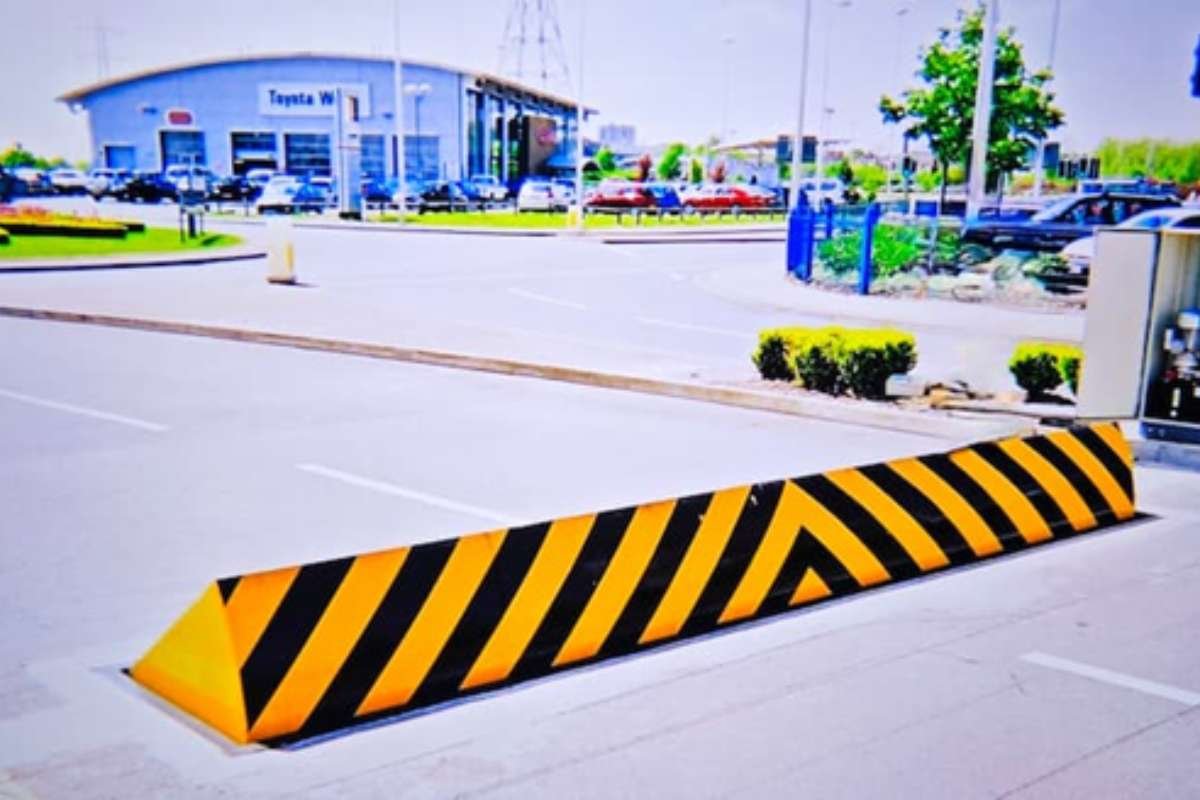The flower business isn’t just about your local shop anymore. It’s undergone a massive glow-up, thanks to technology. We’re talking about a world where artificial intelligence helps get flowers from farms to your doorstep super fast, and where you can even see what a bouquet looks like in your home before you buy it online. What used to be a neighborhood affair is now a global party, with quick deliveries and personalized touches, all thanks to smart tech.
Think about it: florists who once waited for customers to walk in are now selling flowers worldwide through cool websites, social media, and handy apps. This huge shift isn’t just making it easier to buy flowers; it’s helping flower businesses stay fresh, creative, and strong in a world that’s always changing.
In this journey through the floral industry in the digital age, we’ll explore how technology is transforming everything from online sales and cutting-edge growing techniques like AgTech, to the drive for sustainability and evolving design trends. We’ll also touch on the challenges and exciting opportunities florists face as they blend digital efficiency with the timeless artistry and human connection that flowers bring. Get ready to see how new ideas and genuine connections are helping the flower world not just survive, but truly bloom in our connected world!
The Digital Revolution in Floristry
The floral industry in the digital age has completely transformed! Online flower sales are booming, expected to hit a massive $7.5 billion globally by the end of 2025 and more than double by 2035. This growth is all about convenience, more choices, and easy access to beautiful arrangements from anywhere.
Most people are now buying flowers on their phones – over 70% of online sales happen there! Florists with mobile-friendly websites are winning big, using personalized recommendations, special occasion reminders, and flexible subscriptions to make shopping a breeze.
Social media and influencers are also key, with florists creating viral content like “flower arranging challenges” on platforms like Instagram and TikTok. These engaging digital stories drive sales, especially among Gen Z and Millennials who value authenticity and visual connections. In 2025, it’s not just about buying flowers; it’s about connecting, sharing, and being part of a vibrant online flower community.
The Technologies Powering the Floral Industry in the Digital Age

| Technology | How it Helps Florists | What it Means for You |
| AI | Predicts demand, designs bouquets, powers chatbots | Personalized service, perfect arrangements, instant help |
| Blockchain | Traces flower journey, verifies ethical sourcing | Trustworthy origins, ethically sourced blooms |
| Virtual/Augmented Reality | Creates immersive shopping experiences | “Try on” bouquets, design your own virtually |
Technology is truly revolutionizing the flower business, changing everything from how flowers are grown to how they arrive at your door. Artificial intelligence, or AI, is now a florist’s best friend. It helps them predict which flowers will be popular, so they always have the right ones in stock. AI can even help design bouquets, picking out colors and styles that customers will love. And if you have a question, smart chatbots are there to help instantly, making your online shopping experience super easy and enjoyable anytime. Plus, automated systems and smart delivery schedules ensure your flowers arrive fresh and on time, even during busy holidays.
Blockchain technology is bringing a new level of trust to the flower world. Imagine knowing exactly where your flowers came from, every step of their journey from the farm to your home. This technology lets you track and verify everything, so you can be confident your bouquet was ethically sourced and is exactly what you ordered. This commitment to being open and honest is building stronger relationships between florists and their customers, which is key to success in the ever-changing floral industry in the digital age.
And for a fun twist, virtual and augmented reality are stepping up! With just your phone or a VR headset, you can see flower arrangements in amazing detail, almost like they’re right in front of you. You can even create your own virtual bouquets in real time! These immersive experiences make shopping for flowers online convenient, incredibly interactive, and enjoyable.
The Rise of AgTech in Floriculture

The way flowers are grown is getting a major upgrade, all thanks to technology! We’re seeing a true revolution in how nature and farming tech, or AgTech, work together.
Imagine smart greenhouses using sensors and robots to give each flower perfect light, water, and warmth – like a personalized spa treatment! Vertical farming also stacks blooms, saving space and resources for fresh, local flowers year-round.
Biotechnology is making flowers even better, creating new varieties that are stronger, more vibrant, and last much longer. Your bouquet could stay beautiful for weeks! Plus, dried and preserved flowers are gaining popularity for being luxurious, low-maintenance, and super eco-friendly.
Even AI helps farmers monitor soil, water, and pests from afar. This real-time data means healthier plants, bigger yields, and consistent quality. With these innovations, the floral industry in the digital age is blending art and science, promising greener, more reliable, and simply stunning flowers for everyone.
The Greener Side of Modern Floristry
In the floral industry in the digital age, being kind to the planet is a huge priority for both florists and customers. People now want beautiful bouquets that are also eco-friendly. This means florists are using compostable wraps and foam-free designs, ditching plastic and non-biodegradable packaging to reduce waste and show their environmental commitment.
Buying local flowers is also gaining popularity. Customers prefer seasonal blooms from nearby farms, which supports regional growers and significantly cuts down on pollution from long-distance shipping. Plus, smart “green” delivery methods like electric vans and optimized routes ensure flowers arrive with minimal environmental impact.
Technology is making these sustainable practices clear and trustworthy. Digital tracking and blockchain tools allow customers to see exactly where their bouquet came from, ensuring ethical sourcing and fair labor practices. This commitment to transparency builds stronger trust, redefining how we experience flowers: it’s about beauty, care, and making positive choices for our world.
Subscription Flowers and the Art of Mood-Lifting Blooms

Creativity and design are flourishing in the floral industry in the digital age! We’re seeing arrangements that go way beyond just roses and lilies. Florists are playing with bold colors, dramatic shapes, and even blending different cultural styles. Think wild, uneven bouquets inspired by traditions from all over the world – they’re popping up in homes, at events, and in offices, showing how much we want flowers to reflect our unique selves.
Flowers aren’t just for special occasions anymore; they’re becoming part of our daily lives.
Subscription services are booming, bringing fresh arrangements right to your door regularly for your home, office, or just to boost your mood. People now see flowers as more than just gifts; they’re natural mood-lifters and design elements that make any space feel warm and inviting. This trend fits perfectly with biophilic design, which is all about bringing nature indoors to make us feel better.
The best customer experiences in the floral industry now perfectly mix the ease of technology with the beautiful craft of traditional floristry. This is called an omnichannel approach. It means you can design your perfect bouquet online and then pick it up at a local shop, or even have a video chat with a florist for personalized advice. Whether you’re shopping on your phone or visiting a store, you now have super flexible and interactive ways to connect with the artistry and lasting beauty of real flowers.
Small Businesses Facing the Digital Shift
The floral industry in the digital age presents both exciting opportunities and tough challenges for smaller flower shops. Many independent florists struggle to adopt new tech and digital skills due to limited budgets and a lack of in-house expertise. This puts them at a disadvantage against larger competitors who can quickly implement the latest innovations.
As florists handle more customer data online, cybersecurity and data privacy are critical. Businesses are investing in secure platforms and transparent data practices to build trust. Ensuring a safe online shopping experience is crucial for maintaining loyal customer relationships.
Despite the rise of online ordering, personal service and local artistry remain vital. Successful florists combine digital efficiency with human connection, using strategies like online design with in-store pickup, virtual consultations, and local events. The real opportunity for the floral industry lies in balancing technology for wider reach with the heart and craftsmanship that make local flower shops special.
The Road Ahead: What’s Next for Floristry

The future for the floral industry in the digital age is incredibly bright! We’re on the cusp of amazing advancements like AI that can design personalized bouquets and “micro-fulfillment centers” for faster, cheaper deliveries. Breakthroughs in biotechnology are also bringing us flowers that last longer, boast vibrant colors, and are tougher, all grown sustainably.
Consumers in 2025 increasingly demand eco-friendly options, unique designs, and seamless online shopping, driving the popularity of flower subscription services. Experts predict steady growth, fueled by the exciting blend of technology, sustainability, and creativity.
Ultimately, the true success of the floral industry will hinge on balancing innovation with genuine human connection. This harmonious dance between digital tools and human artistry promises a flourishing future for flowers and those who cherish them.
Conclusion
The floral industry in the digital age has truly blossomed, mixing technology with age-old traditions. Imagine AI designing stunning bouquets, knowing exactly where your flowers came from thanks to fancy tracking, or even “trying on” flowers virtually! These changes help florists work smarter, reach more people, and deliver fresh, personalized flowers faster and more sustainably.
Despite this high-tech growth, the beautiful art of creativity and genuine human connection remains vital. Flowers have always expressed emotions and brightened lives in ways technology alone can’t replace. It’s the florist’s eye for detail, the carefully crafted arrangement, and the trust between giver and receiver that define the true floral experience.
Moving forward, the real key to success for the flower business will be embracing both new ideas and heartfelt connections. Technology opens doors, but creativity and trust are the core. This ensures every bouquet tells a unique story and brings joy, promising a bright future for flowers and those who cherish them.


















